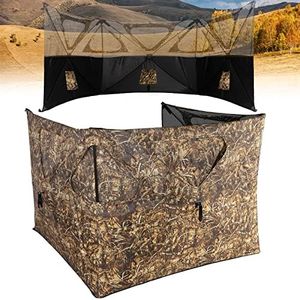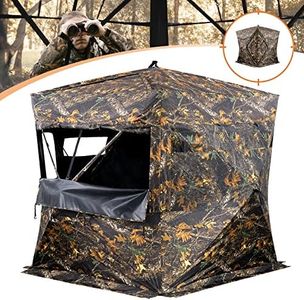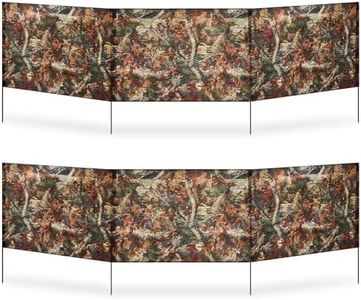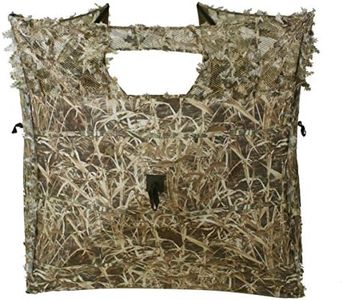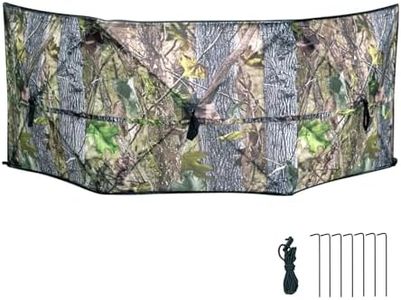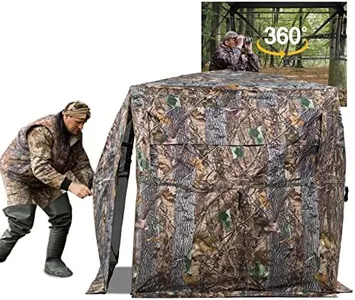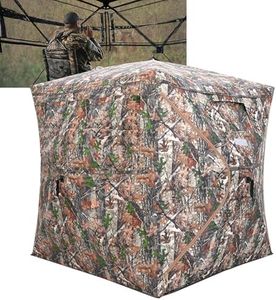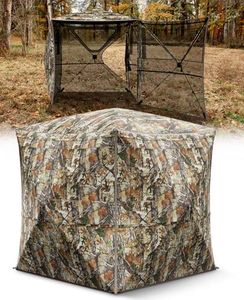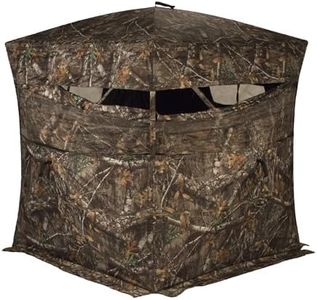We Use CookiesWe use cookies to enhance the security, performance,
functionality and for analytical and promotional activities. By continuing to browse this site you
are agreeing to our privacy policy
10 Best Duck Hunting Blinds
From leading brands and best sellers available on the web.Buying Guide for the Best Duck Hunting Blinds
Choosing the right duck-hunting blind can make a big difference in your hunting success and comfort. The main goal of a blind is to help you stay hidden from ducks while giving you enough comfort, mobility, and functionality for a good hunting experience. When picking a hunting blind, you should consider where you’ll be hunting, how many people or dogs will be with you, how often you'll move locations, and what level of concealment you need. Each feature of a blind affects how well it will work for your personal hunting style and surroundings.Type of BlindThe type of duck-hunting blind refers to its basic design and intended use, such as layout blinds, boat blinds, pit blinds, or panel/blind walls. This spec is important because it directly affects portability, ease of setup, and the kind of environment it's best used in. For instance, layout blinds are great for fields and are easy to hide, while boat blinds are made for hunting over water. Pit blinds are more permanent and suited for long-term spots, while panel blinds offer flexibility and fast setup with some standing room. Think about where you'll hunt most—if you move around a lot or hunt in different locations, portable blinds are better. If you have a favorite spot that you can set up permanently, something more stationary might suit you.
Size and CapacitySize and capacity refers to how many people (and possibly dogs) the blind can comfortably fit, as well as its overall dimensions. This is important since comfort and efficiency in hunting depend on having enough space. Blinds come in small, single-person sizes up to larger blinds that can accommodate groups and gear. If you mostly hunt alone or with one partner, a compact blind might be best since it’s easier to carry and conceal. If you regularly hunt with friends or need room for a dog and extra gear, look for a larger capacity blind.
Concealment FeaturesConcealment features refer to the materials, patterns, and add-ons (like grass straps or camo netting) that help the blind blend into the environment. This spec is crucial since staying invisible to ducks is the whole point of a blind. There are blinds with different camo patterns for marshes, fields, or timber. Some blinds let you add local vegetation for better blending. Think about the area where you hunt—choose camo that matches your surroundings, and consider how easy it is to add natural cover for a convincing hide.
Portability and Set-UpPortability and set-up time indicate how easy it is to transport the blind and how quickly it can be assembled or taken down. This matters if you scout different spots or hunt on public land. Lightweight and compact blinds are easier to carry and set up, making them a good fit for hunters who cover a lot of ground or have to walk far. Heavier, bulkier blinds may provide more space and comfort, but they’re best for spots you revisit over a season. Pick based on how often you move and how much gear you typically bring.
Weather Protection and ComfortWeather protection and comfort include features like waterproof roofs, windproof panels, and insulation. This is important for comfort on wet, windy, or cold days and can make a long hunt more enjoyable. Some blinds are basic, just keeping the rain and wind off, while others offer insulated walls, windows, and more enclosed designs. If you hunt in harsh climates, prioritize better weatherproofing and enclosed designs. If you hunt in mild or warm weather, breathable and open designs might serve you better.

